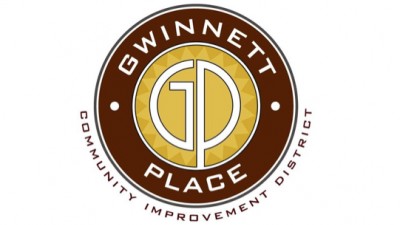Building The Next Generation At The Gwinnett Place CID

On a warm Georgia weekend in April, the parking lot of Gwinnett Place Mall was filled with the sights, sounds and flavors of the 75 nationalities represented in Metro Atlanta. The inaugural Atlanta International Night Market, a cultural and culinary showcase encouraging visitors to “taste the world,” brought the ambience of the outdoor markets popular in Asia and Europe to Gwinnett County.
The more than 52,000 attendees, performers, chefs, artists, local businesses and residents represented the increasingly vibrant activity happening in the Gwinnett Place Community Improvement District. The excitement extends beyond one weekend.
Gwinnett Place became a major hub for commercial activity in the eponymous county when the Gwinnett Place Mall opened in 1984. Just off Interstate 85, the mall’s accessibility and popularity helped bring in new restaurants, hotels and office buildings, creating a destination for shoppers from as far away as South Carolina.

When the Mall of Georgia and Sugarloaf Mills opened in the early 2000s, the Gwinnett Place area was dramatically impacted. The CID, founded in 2005, turned its focus toward transforming the area by creating a neighborhood that encourages people to stay for more than a shopping spree. It is a push away from a suburban, auto-centric model to a walkable, experience-based urban center.
The initiative comes as a response to the demographic shifts within the 97,900 people who live within three miles of Gwinnett Place.
The population has increasingly skewed younger and more diverse. Younger, smaller households with fewer children make up a large portion of the community, and approximately 32,000 Millennials live within in the area. Based on 2015 data, residents are 40% white, 33% Hispanic, 24% African-American and 17% Asian.
Businesses reflect the diversity of the community. At Gwinnett Place, both bánh mì and macarons are on the menu. Family activities, like the night market and this Saturday’s Gwinnett Multicultural Festival at Gwinnett Place Mall from 10 a.m. to 2 p.m., have become a central part of life in the area.

Households represent a mix of different lifestyles, incomes and cultural backgrounds. The median income is $42.7K, but there are also more affluent households in the area, with 27% earning more than $50K and 10% earning over $100K. The variety of economic backgrounds has created an opportunity for a residential mix more nuanced than some of the U.S.’ increasingly pricier cities.
The stage has been set for a growing, modern urban core, and the CID has pushed for more initiatives that not only improve the current community’s quality of life, but also entice the 60,000 daily commuters to make Gwinnett Place their permanent residence.
The Venture Drive Redevelopment Overlay District promotes a mix of high-end, dense residential, commercial businesses, office buildings, recreation and commuter transportation. Approved in October 2016 and expanded in December by the Gwinnett County Board of Commissioners, the district has attracted the attention of the Georgia development community as the next frontier for live/work/play.
Financial benefits have also helped bring big companies and local shops into the area. A group of 4,700 companies employs the community and beyond, with highly skilled professions in areas like science and finance making up 25% of employment. The CID helps attract new businesses and startups with job-growing tax credits through the Opportunity Zone, reduced costs for applications, permits, taxes and sewer charges. Development reviews and public hearings are also accelerated under the Gwinnett County Economic Development Ordinance.
At Gwinnett Place, CID leaders have seized an opportunity to transform a former suburban mall center into a livable, diverse and economically thriving community for the next generation.
To learn more about this Bisnow content partner, click here.

